 Image search results - "Beach" Image search results - "Beach" |

Higashi Mito Station (on the way to Oarai)
|
|

Oarai StationShort ride from Mito Station.
|
|

Observation tower at the beach and a symbol of Oarai
|
|

Ferry port (service to Otaru, Hokkaido)
|
|

Sign saying Oarai is famous for noren curtains.
|
|

Wave breakers
|
|

Resort hotel
|
|
|

The beach
|
|
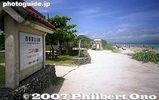
Kondoi Picnic Site
|
|
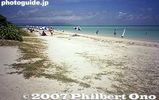
Kondoi beach
|
|
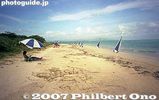
Be aware that these parasols are not free.
|
|

Kondoi beach
|
|
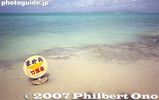
Hoshi Sunahama or Star Sand Beach
|
|

Seafood restaurants
|
|

Seafood restaurants
|
|

Anko seafood soup (miso-based)
|
|

Fresh oysters
|
|

Baby scallops
|
|

Ika squid
|
|

Dried fish
|
|

Train back to Mito.
|
|

Kasai Kaihin Park beach. It's not Hawaii, but better than nothing. 葛西海浜公園
|
|

Baby stingray (dead) beached.
|
|
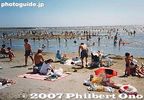
Swimmers in summer at Kasai Kaihin Park, one of the few places in Tokyo where you can enjoy an ocean beach.
|
|
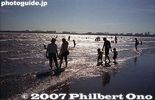
Kasai Kaihin Park beach
|
|
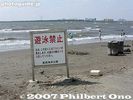
No swimming sign
|
|
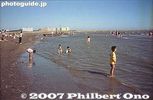
Kasai Kaihin Park beach. In the distance are Tokyo Disneyland hotels.
|
|

In the murky waters.
|
|
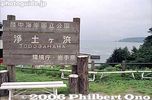
Jodogahama sign. Part of the Rikuchu-Kaigan National Park.Rikuchu-Kaigan National Park, Iwate Pref.
|
|
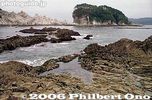
Jodogahama literally means Paradise Beach.Rikuchu-Kaigan National Park, Iwate Pref.
|
|

Dramatic rock formations.Rikuchu-Kaigan National Park, Iwate Pref.
|
|
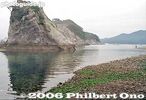
Jodogahama, Iwate Pref.Rikuchu-Kaigan National Park, Iwate Pref.
|
|

Not a sandy beach, but still popular in summer.
|
|
|

Verse 2 Lyrics (Omatsu/Omi-Maiko) 二番の英訳(雄松"Pine trees are very green, on sands very white.
Omatsugasato is, a young maiden's home.
Bush of red camellia, hides her teary face.
She's weeping o'er a lost love, much too short to last.
松は緑に 砂白き
雄松が里の 乙女子は
赤い椿の 森蔭に
はかない恋に 泣くとかや
Matsu wa midori ni, suna shiroki
Omatsugasato no, otomego wa
Akai tsubaki no, morikage ni
Hakanai koi ni, naku toka ya
Omi-Maiko is still famous for white sand beaches and pine trees. In summer these beaches are cluttered with people trying to get a tan.
See more photos of Omi-Maiko here.
|
|

"Pine trees are very green, on sands very white." Omi-Maiko
|
|

White sands of Omi-Maiko (Omatsu), Otsu, Shiga
|
|

Ripples lap white sands of Omi-Maiko.
|
|

Pine trees at Omi-Maiko
|
|

Kyoto University Rowing Club arrive at Omi-Maiko in Aug. 2006 during their annual Lake Biwa rowing trip.
|
|

Omatsu "Famous Place" marker
|
|

Roadside scenery on Amami-Oshima island, Kagoshima, Japan.
|
|

Scenic coast on Amami-Oshima island, Kagoshima, Japan.
|
|
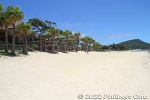
Amami Resort Basyayama-mura restaurant terrace right on the beach..
|
|

Amami Resort Basyayama-mura has a nice, white-sand beach.
|
|
|
|
|
|
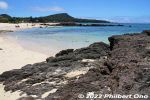
Lava rock outcropping also on the beach.
|
|
|
|
|
|
|
|
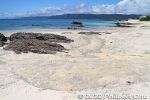
This beach had pumice rocks (軽石) creating artistic patterns on the sand. They were still washing up on the beach in June 2022, but not as much as in Oct. 2021 when they clogged harbors and blanketed beaches.
|
|
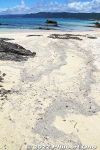
On Amami-Oshima, Kagoshima, Amami Resort Basyayama-mura beach had pumice that came from an undersea volcano (Fukutoku-Okanoba) erupting near the Ogasawara islands (way south of Tokyo).
|
|
|
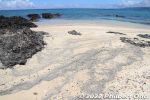
Pumice rocks are small, lightweight, porous pebbles. Floats on water. Saw it for the first time here.
|
|
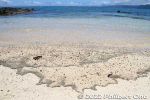
In 2021, an army of volunteers took weeks to clean up Okinawan and Amami beaches. It was almost like cleaning up an oil spill. Glad the problem has subsided.
|
|

Pumice pebbles on a beach in Amami-Oshima, Kagoshima, Japan.
|
|
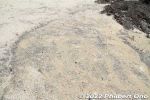
Someone had recently raked or cleaned up the pumice.
|
|

On the opposite side of Kabira on the other side of the peninsula is another stretch of white sands called Sukuji Beach. One of Ishigaki's major swimming beaches. 底地ビーチ.
|
|

Sukuji Beach has a lot of shallow water, so it's safe to swim. But at low tide, there's lots of rocks. Be sure to swim within the designated area protected against jellyfish with underwater nets. 底地ビーチ
|
|

Sukuji Beach is 1 km long. It has showers and changing rooms for the public. It's also where the Ishigaki Seaside Hotel is located. 底地ビーチ
|
|

Naminoue Beach in central Naha is convenient for a quick swim or sunbathing. 波の上ビーチ
|
|
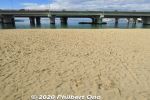
Naminoue Beach in central Okinawa. A local favorite and convenient for Naha locals in summer.
|
|
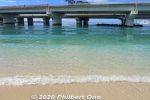
Although this big bridge is right in front, most people don't seem to mind it.
|
|
|
|

Naminoue beach, Naha
|
|
|
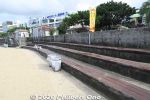
Bleachers at Naminoue Beach.
|
|
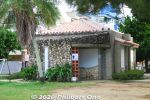
Okinawan-style restrooms at Naminoue Beach.
|
|

Map of the beaches in Naminoue area.
|
|
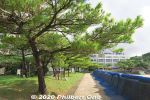
Naminoue Beach Park.
|
|

Naminoue Beach Park.
|
|
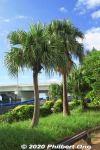
Naminoue Beach Park.
|
|

Chirihama Nagisa Driveway is Japan's only beach where motor vehicles are permitted to run as a public thoroughfare. It extends for about 8 km.The beach is not pronounced "Senrihama."
|
|

Chirihama Nagisa Driveway in Hakui, Ishikawa is Japan's only beach where motor vehicles are permitted to run as a public thoroughfare. It extends for about 8 km. It goes parallel to another highway inland, so this beach road is more for tourists. Note that this beach may be closed to traffic in bad weather.
|
|

Even tour buses can easily drive on the beach. One of the coolest things I ever saw in Japan.Chirihama Nagisa Driveway in Hakui, Ishikawa.
|
|

The sand grains are about half the size of normal sand, resulting in a very packed and solid sandy surface. Solid enough for vehicles.Chirihama Nagisa Driveway in Hakui, Ishikawa.
|
|
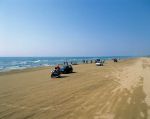
Chirihama Nagisa Driveway in Hakui, Ishikawa. You can also park your car and wade in the water.写真提供:©石川県観光連盟
|
|

Chirihama Nagisa Driveway in Hakui, Ishikawa.写真提供:©石川県観光連盟
|
|
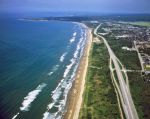
Aerial view of Chirihama Nagisa Driveway in Hakui, Ishikawa.写真提供:©石川県観光連盟
|
|

Obama beach
|
|

Obama beach, fit for swimming in summer.
|
|

Obama coast
|
|
|

Statue of an ama woman diver sitting on a rock on the Onjuku Station train platform. These women dived deep in the ocean (without scuba gear) from small boats to harvest shellfish and other seafood.
|
|

Inside Onjuku Station.
|
|

JR Onjuku Station on the Sotobo Line. From Tokyo Station, catch the Yokosuka or Sobu Line to Chiba Station, then switch to the Sotobo Line. Takes about 2 hours by local train. Faster by express train. There are no coin-operated lockers.
|
|

Next to Onjuku Station is this tourist information office.
|
|

The road in front of Onjuku Station goes toward the beach. Follow the palm trees. A short walk to the beach.
|
|
|

Entrance to Onjuku Beach. Onjuku has various Spanish touches.
|
|

Beach volleyball courts. Should come back in summer.
|
|

Onjuku Beach is a wide, expansive beach. 御宿海岸
|
|

When it's windy, the sand flies.
|
|

Onjuku Beach
|
|
|
|
|
|
|

Windsurfing at Onjuku
|
|
|
|

The beach sand is very fine.
|
|

A few hotels overlook the beach.
|
|

Monument for "Desert of the Moon," a famous children's song created on Onjuku Beach in 1923 by Kato Masao (加藤まさを). (Tsuki no Sabaku) 月の沙漠
|
|

Looks like a sand dune, but it's solid concrete looking like sand.
|
|

A prince and princess on camels. This monument was built in 1969. 月の沙漠
|
|
|

Princess on camel
|
|
|
|

Onjuku Beach
|
|

Iwase took many precious photos of these young and old hardworking women. He put them in a book called Groups of Women Ama Divers. They were topless because it felt more comfortable.
|
|
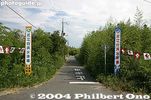
Entrance to Omi-Shirahama Beach
|
|
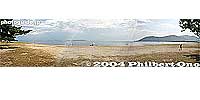
Omi-Shirahama Beach on Lake Biwa. MAP
|
|
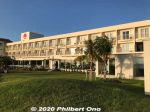
On the southern coast of Ishigaki, we stayed at Ishigakijima Beach Hotel Sunshine for one night. It's a nice hotel. About 30 min. by car from the airport. 本館 https://www.ishigakijima-sunshine.net/
|
|
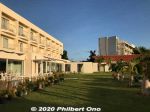
Ishigakijima Beach Hotel Sunshine has the main building on the left. We stayed in the newer annex seen in the distance. Both buildings face the ocean.Including breakfast, it costs ¥8,000/person for two people in a room in the main building.
|
|

Ishigakijima Beach Hotel Sunshine's newer Ocean Garden annex. 新館
|
|
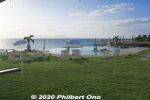
Hotel pool if you want to swim. Because you cannot swim in the ocean...
|
|

My nice room at Ishigakijima Beach Hotel Sunshine's Ocean Garden annex.
|
|
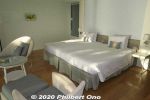
Very modern room.
|
|

Room rate is about ¥15,000/person in this new annex. Pricing also depends on the season.
|
|
|
|
|
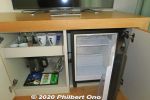
Refrigerator.
|
|

Roomy balcony of my hotel room.
|
|
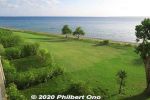
View from my room.
|
|
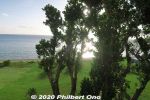
View from my room, partially obstructed by a big tree.
|
|

Tropical plant.
|
|
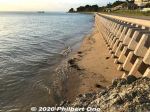
Although the hotel's name has the word "Beach," there's no beach and it's not for swimming. In summer, they have marine activities, but no ocean swimming or sunbathing on a beach. There's a pool and lawn though.
|
|
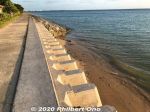
Walked along the oceanfront.
|
|
|
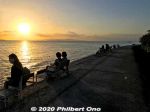
An adjacent hotel had chairs on the waterfront for the sunset.
|
|
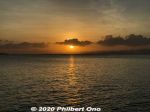
Ishigaki sunset.
|
|
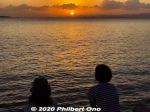
The hotel's oceanfront does have great Ishigaki sunset views.
|
|
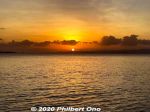
Ishigaki sunset.
|
|
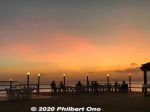
Hotel restaurant terrace at sunset. オープンレストラン 海辺のテラス
|
|
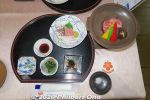
Dinner at the hotel's Nami no Shi (波の詩) restaurant. Dinner was kaiseki ryori (会席料理) including Okinawan beef. 赤瓦レストラン 波の詩にがなの白和え、グルクン南蛮漬、小松菜の胡麻和え、お造り 2 点盛、島魚の煮つけ、県産和牛の 陶板焼き、ゆし豆腐のすまし汁
|
|
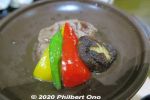
Dinner at the hotel's restaurant.
|
|
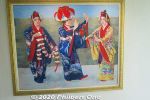
Painting of Okinawan dancers in the hotel.
|
|
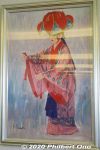
Painting of Okinawan yotsudake dancer in the hotel corridor.
|
|
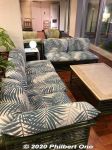
Hotel lobby sofas.
|
|
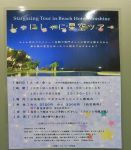
Stargazing on the Ishigakijima Beach Hotel Sunshine's roof. This tour option is called "Shani-shani Hoshizora Tour" (しゃにしゃに星空ツアー). Info in Japanese: https://www.utakuna-ishigakijima.com/hoshizoratour
|
|
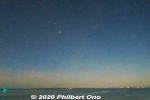
Starry night from Ishigakijima Beach Hotel Sunshine's roof.
|
|
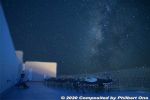
We're lying flat on cots and staring at the sky as our stargazing guide used a laser pointer to point out stars and constellations.
|
|

They also had a telescope to see Saturn and the moon.
|
|
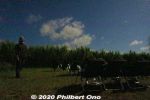
Another stargazing spot on Ishigaki, in the middle of sugar cane. We were with a large group of people also sitting on camping chairs.The guide standing on the left talked nonstop in Japanese with a microphone. He used a laser pointer to point out constellations and stars.
|
|
|
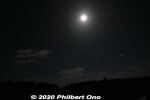
Moon was nice too.
|
|
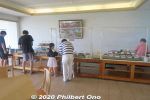
Breakfast buffet at the hotel restaurant in the main building. Plastic partitions protect the food. ブーゲンの浜
|
|
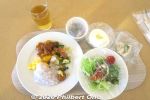
My buffet breakfast at at the hotel restaurant in the main building. Most dishes are covered with Saran wrap.
|
|

Shirahige-no-Hama Beach in Takashima. I know they did some filming here for the NHK Taiga Drama "Go" where she rides on horseback. 白ひげの浜
|
|

Shirahige-no-Hama Beach and Lake Biwa in Takashima, Shiga Prefecture.
|
|
|
|
|
|
|
|
|
|

Entrance to Haginohama Beach. 萩の浜
|
|
|

A small stream empties into Lake Biwa through Haginohama Beach. Numerous streams and rivers like this one feed water to the lake.
|
|

A small stream empties through Haginohama Beach
|
|

Haginohama Beach in Takashima.
|
|
|
|

River mouth
|
|

There was a green belt called Kamogawa Katsuno Enchi. It was basically a beach park.
|
|

Kamogawa Katsuno Enchi park in Takashima. 鴨川勝野園地
|
|
|
|
|

The sand is not as nice.
|
|
|

This is close to Haginohama Beach.
|
|
|
|
|

Back on land.
|
|
|
|
|
|

Festival girls posing for me. They love the attention.
|
|

Kazusa Junisha Matsuri Festival, Ichinomiya, Chiba on Sept. 13, 2009.
|
|

Women standing by to pull the mikoshi.
|
|
|

Tossing the mikoshi into the air.
|
|

I kept shooting their backs. Next time, I'll try to shoot more faces.
|
|

You could go in front of them to shoot their faces, but the water would be deeper.
|
|

They kept waving their fans and cheering in the water.
|
|
|

Great spectacle, especially with women included. Great idea to allow women in the festival.
|
|
|
|

Returning to land.
|
|

The men covered their bellies, while the women covered their bellies and chests.
|
|

This festival separates the amateur photographers from the pros. Amateurs wear long pants and shoes and enter the ocean to take pictures. I was of course wearing shorts and rubber slippers (but barefoot in the water).
|
|

The next spectacle was them running through the torii on the beach.
|
|
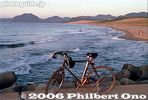
Tottori beach near the Chiyo River.
|
|
|

Hakuto Beach, famous for the folktale about a white rabbit crossing the ocean on crocodile backs.
|
|

Uomidai Lookout Point 魚見台
|
|

15-min. walk from the bus stop to the beach. People everywhere.
|
|

Crowd on Kehi no Matsubara Beach
|
|
|

The crowd stretched to the very far side of the bay.
|
|
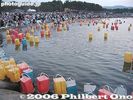
At 6:30 pm, people started releasing their candlelit lanterns into the ocean. Tsuruga, Fukui Pref.
|
|
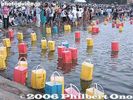
You could buy a lantern for 500 yen. Choice of three colors: Red, blue, and yellow.
|
|

Toro nagashi at Kehi no Matsubara Beach in Tsuruga, Fukui Pref.
|
|
|
|
|
|
|

The lanterns say "For the Spirits of Past Generations."
|
|
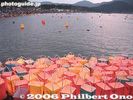
I was sitting on a jetty where many lanterns got stuck. We could feel the hot air from the candles.
|
|
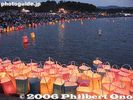
As it got darker, the scene got prettier.
|
|
|
|
|
|
|
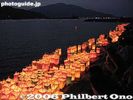
Lanterns along the jetty.
|
|
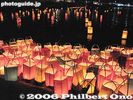
By 7:30 pm, it was completely dark.
|
|
|
|

Fireworks started at 7:30 pm.
|
|

Great match with the lit lanterns and fireworks.
|
|
|

Whoever thought of combining toro nagashi with fireworks was a genius.
|
|

Toro nagashi and fireworks at Tsuruga, Fukui Pref.
|
|

Bright fireworks light up the audience on the beach.
|
|

The fireworks were brilliant and world-class, included a few waterborne "half-dome" fireworks.
|
|

Line for the free shuttle bus back to Tsuruga Station. They had many shuttle buses so we didn't have to wait long.It was a very efficient and quick operation. Although I did leave early.
|
|

On the northern tip of Iriomote is scenic Hoshi-suna Beach. Famous for star-shaped sand grains, but hard to find. 西表 星砂の浜Map here
|
|

Iriomote Hoshisuna Beach.
|
|

Iriomote Hoshizuna Beach.
|
|

Northern Iriomote coast.
|
|

Tatara-hama Beach
|
|
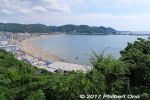
View of Zushi Beach from the hillside.
|
|
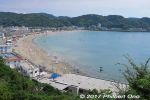
View of Zushi Beach from the hillside.
|
|
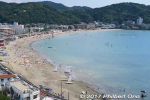
Zushi was developed as a seaside resort from the 1960s. Celebrities who had homes here include Shintaro Ishihara, novelist and former Tokyo governor.
|
|
|
|
|
|
|
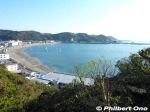
View of Zushi Beach from the hillside.
|
|
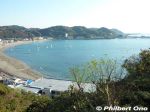
View of Zushi Beach from the hillside.
|
|
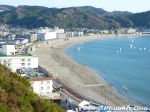
View of Zushi Beach from the hillside.
|
|
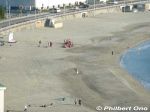
In summer, Zushi beach is full of beach goers.
|
|
|
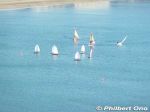
Windsurfers in Zushi,
|
|
|
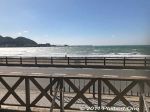
Coastal road along Zushi beach.
|
|
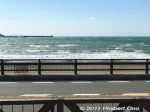
Coastal road along Zushi beach.
|
|
|
|